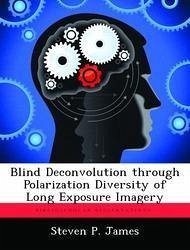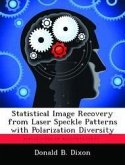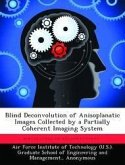The purpose of the algorithm developed in this thesis was to create a post processing method that could resolve objects at low signal levels using polarization diversity and no knowledge of the atmospheric seeing conditions. The process uses a two-channel system, one unpolarized image and one polarized image, in a GEM algorithm to reconstruct the object. Long exposure images were simulated and a smile Kolmogorov model used. This allowed for the atmosphere to be characterized by single parameter, the Fried Parameter. Introducing a novel polarization prior that restricts the polarization parameter, it was possible to determine the Fried Parameter to within half a centimeter without any addition knowledge or processes. It was also found that when a high polarization diversity was present in the image could be reconstructed with significantly better resolution and signal level did not affect this resolving capability. At very low signal levels, imagery with low to no diversity could not be resolved at all whereas high diversity resolved equally as well as if there was a high signal level.
Bitte wählen Sie Ihr Anliegen aus.
Rechnungen
Retourenschein anfordern
Bestellstatus
Storno









